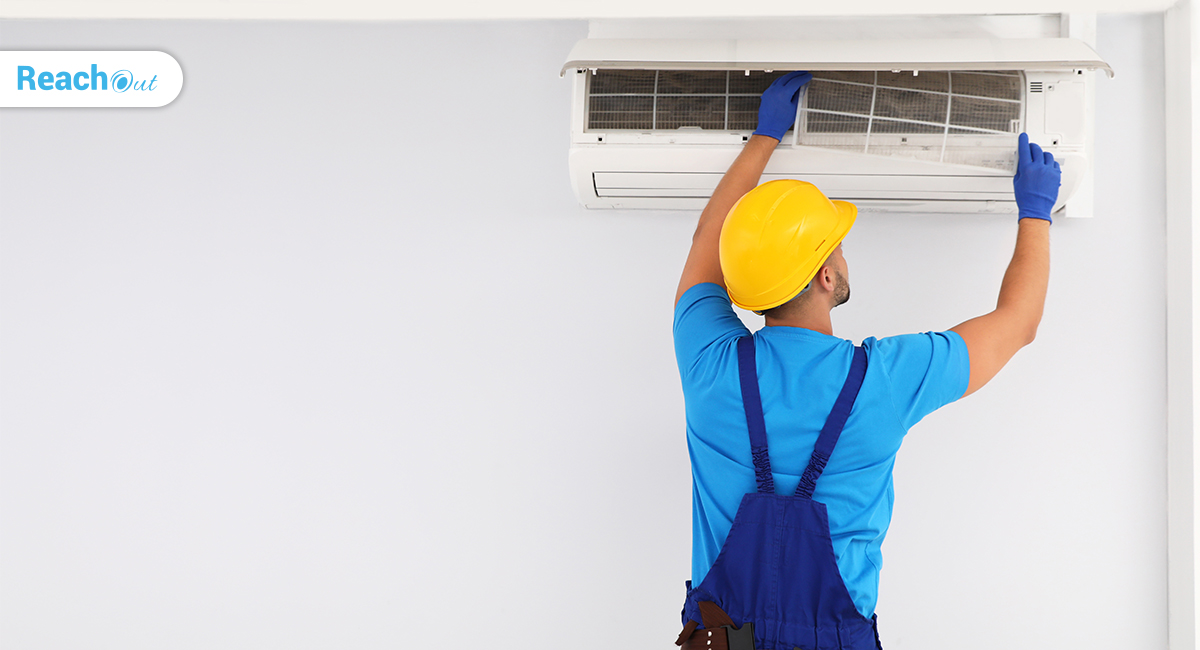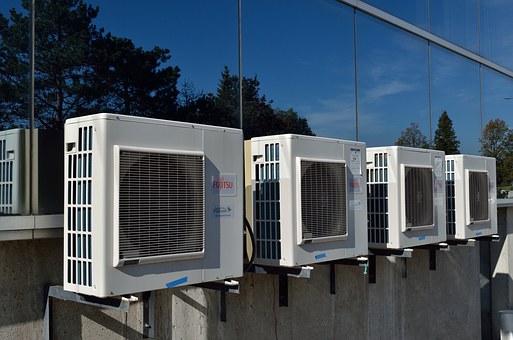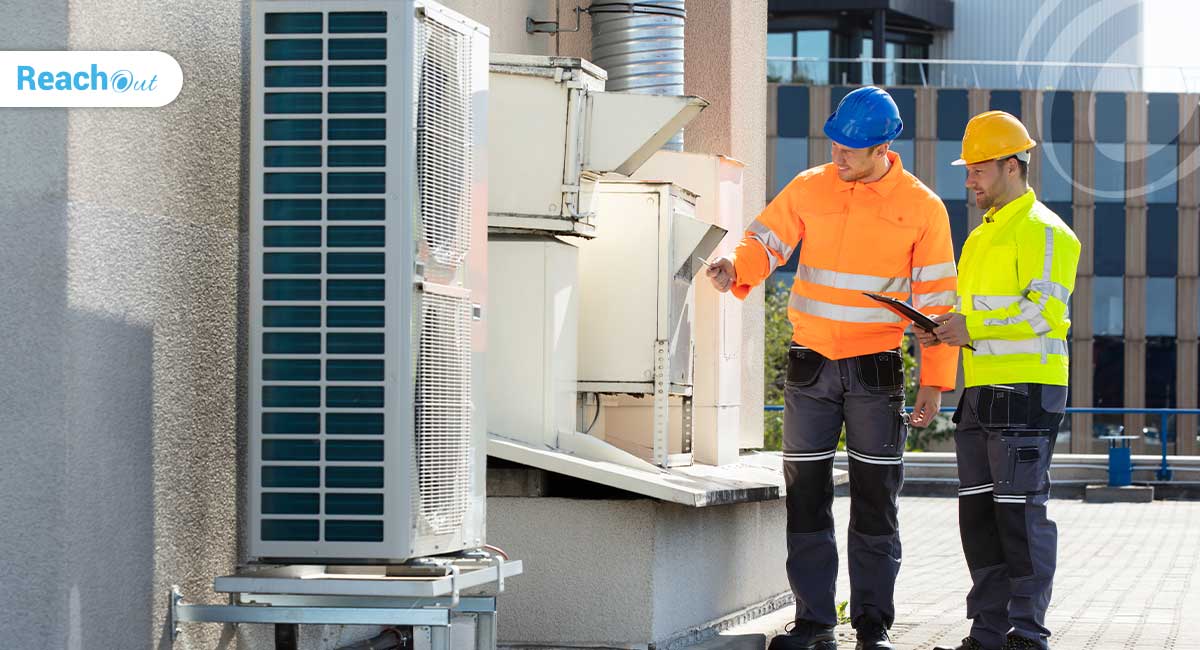
An Air Conditioner Maintenance Handbook for Field Technicians
Air conditioners keep rooms cool and comfortable and make hot summers bearable. But air conditioners need regular maintenance. Air conditioning units also develop issues that mandate prompt fixes. That’s why air conditioner services have become prominent today.
The HVAC industry has always enjoyed a surging demand for retrofitting and new installations during summertime. The COVID-19 pandemic outbreak has severely affected the global supply chain and logistics, forcing the heating, ventilation, and air conditioning (HVAC) industry to face a severe shortage of components. Due to the large-scale adoption of energy-efficient air conditioners that shrink costs and power wastage, the demand for air conditioner maintenance services is evergreen.
Read more: Are HVAC Maintenance Contracts Worth the Investment?

Here’s a detailed guide on air conditioner maintenance services for field agents. Field technicians can follow these best practices to enhance air conditioner troubleshooting and make quick fixes.
1. Routine maintenance
Routine air conditioner maintenance service involves cleaning the air filter and tune-ups. The optimal time for these air conditioner services depends on the unit’s model and the usage pattern.
- Clean the air filter: Air filters accumulate dirt. Dirty filters restrict the airflow and decrease the efficiency of the air conditioner. Check the air-conditioner manual on when to clean or replace the filter. Usually, air filters require cleaning once every three to four months. Clean the air filters fortnightly in summers or when operating in a dusty environment.
- Clean the condenser coils: The air conditioner’s coil absorbs the heat and makes the air cooler. Dirt and debris accumulated on the coil reduce the cooling. Use a coil brush to dust the coil deep. Use a foaming coil cleaner solution to clean out any unreachable dust. Check the condenser coils every two months as part of routine air conditioner maintenance service.
2. Tune-up the air conditioner
Perform the following tune-up tasks as part of a standard air-conditioner maintenance service:
- Clean the ducts and drain pipe: The moisture removed from the indoors collects in the drain pan and restricts the airflow. Over time, the drain pipe and the ducts get clogged. Clean up the debris from the vents, the pan, the drain line, and the ducts to prevent such clogging.
- Check the refrigerant levels: If the refrigerant level is low, identify the source of the leak, and repair it. Refill the refrigerant to the recommended levels.
- Inspect the electrical components: Check the electrical components, such as capacitors, for wear and tear. At times, the capacitor dies owing to power fluctuations and overheating. A dead capacitor prevents the air conditioning from starting.
- Adjust the fan balance: Improper balance hinders heat dissipation.
- Lubricate the parts: Oil in the motors seeps out over time and increases wear and tear. Lubricate all moving parts, such as fans and motors.
The telltale sign for scheduling a tune-up is the airflow coming out of the unit becoming weak. It is a good practice to inspect and tune the air conditioner once a year, anyway.
Read more: 5 Factors to Consider While Creating a Roadmap for HVAC Professionals
3. Air conditioner troubleshooting
When a client calls in and reports an issue with their air conditioning, perform these basic checks upfront as the first step of air conditioner troubleshooting:
- Check the circuit breaker: Fluctuation in voltage or problems with the electric supply may trip the circuit breaker.
- Check the power supply: Check the power input cables for faulty plug or faults.
- Check the remote: The unit may not start due to a damaged remote control. Check the batteries as well.
- Check the thermostat: An unintentional change of the thermostat setting to heat results in the vents emitting hot air.
- Check the air vent: Make sure that all air ducts and vents are clear. Vents clogged by dust or dirt impede the flow of air.
4. Indoor water leak
A common complaint regarding air conditioning is indoor water leaks. Water backs up from the drainpipe and leaks through the inside because of a clogged condensate drain. Algae or fungi build-up and dust accumulation cause the blockage.
Unclog the clogged condensate pipe using a wet or dry vacuum. Pouring vinegar or recommended fungicides kill the fungi or algae build-up.
5. Outdoor water leak
Air conditioners produce water when it cools the air. But water leakage indicates problems with the unit. A dry air filter, broken condensate pan, a bad seal, or even improper installation could cause puddles of water right under the compressor.
Make a thorough inspection and fix the broken parts. Redress the issue to pre-empt its escalation.
6. Foul smell
Wet filters, clogs in the condensate drain, or fungus build-up could cause the air conditioner to emit a foul odor. Decaying animals, such as rats, trapped inside the unit, stink. The solution is to clean the ducts at regular intervals.
Read more: How to Convert a Single HVAC Sale into a Repeat Customer
7. Frozen evaporator coils
If the air conditioner does not receive enough air, the evaporator coil freezes and the air conditioner stops working.
Diagnosing issues related to frozen coils requires visual inspection of the damage. Thaw the coil by not using the air conditioner for twenty-four hours. A hair dryer helps speed up the process.
8. Refrigerant leak
Freon, the refrigerant used inside air conditioning, cools the air. This refrigerant may leak because of holes in the pipes or faulty insulation. Leaked Freon reduces the efficiency of the air conditioner. It also poisons the immediate environment.
Freon leaks may be major or minor. Minor leaks need only a simple patch up over the source of the leak and refilling the Freon. Do not overcharge or undercharge the refrigerant during recharging.
Major leaks indicate significant faults in the piping system. The fix is to change pipes.
9. Failure of electric control
As air conditioners run on electric control systems, a faulty thermostat or power issues can turn the unit on and off frequently. This wears off the compressor and fan system early.
The air conditioning unit starts when the compressor, condenser motor, and blower engine connects. Corrosion of wires or terminals may prevent the compressor and motor from turning on. To troubleshoot the issue, inspect the electrical connection for breaks or other faults.
10. Fan Failure
The fan is a significant component of the outdoor unit of the air conditioner. If the fan does not work correctly, heat transfer does not take place properly. The compressor may overheat, and the AC unit may stop working. Left unattended, it could even damage the compressor and cause replacement of the entire unit.
The fan not working could result from a loose component or an issue with the wiring. As the first step of air conditioner troubleshooting, remove the case of the outdoor unit and make a visual inspection.
11. Strange noises
The air conditioner may emit strange noises, such as a loud banging or clanging. These are usually indicators of a severe problem, such as the fan hitting the frame or some other mechanical parts failure. Diagnose the issue through a thorough visual inspection, and make the necessary fixes.
Read more: Field Service Software To Keep Small HVAC Business Competitive
12. Use a robust field service management suite
Regular air conditioner maintenance service preempts most of these issues. A field service management suite like ReachOut makes it easy to keep track of the maintenance schedule and address service requests fast. It also increases the efficiency and productivity of field technicians through intelligent scheduling, route optimization, automated alerts and reminders, streamlined inspections, automated invoices, and more.
Read more: 6 Reasons To Use An Integrated Software Like ReachOut For Your HVAC Estimates
ReachOut Suite is an integrated field service software that enables HVAC contractors and professionals to provide better air conditioning maintenance service to their customers. If you are interested in learning more about our HVAC software or if you would like to opt for a free trial or watch a personalized demo, contact us today.
Ashmitha Chatterjee
Ashmitha aspires to enhance the efficiency of service technicians. With a unique perspective on the challenges and opportunities within field service management, Ashmitha frequently shares her knowledge through industry blogs, articles and workshops.
More posts by Ashmitha Chatterjee




